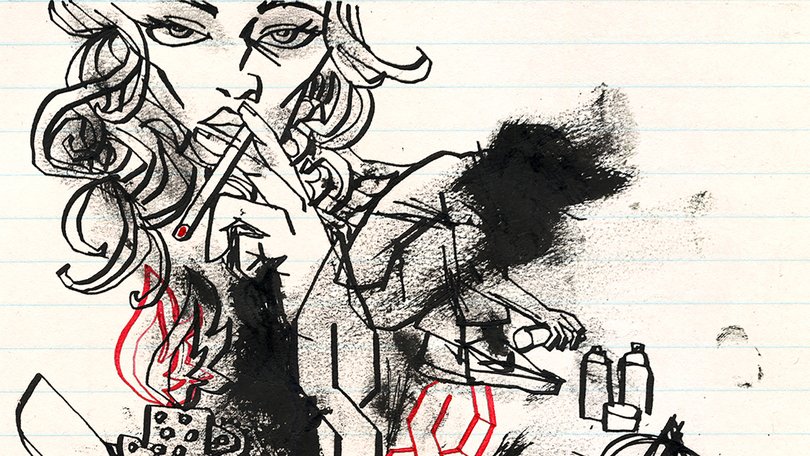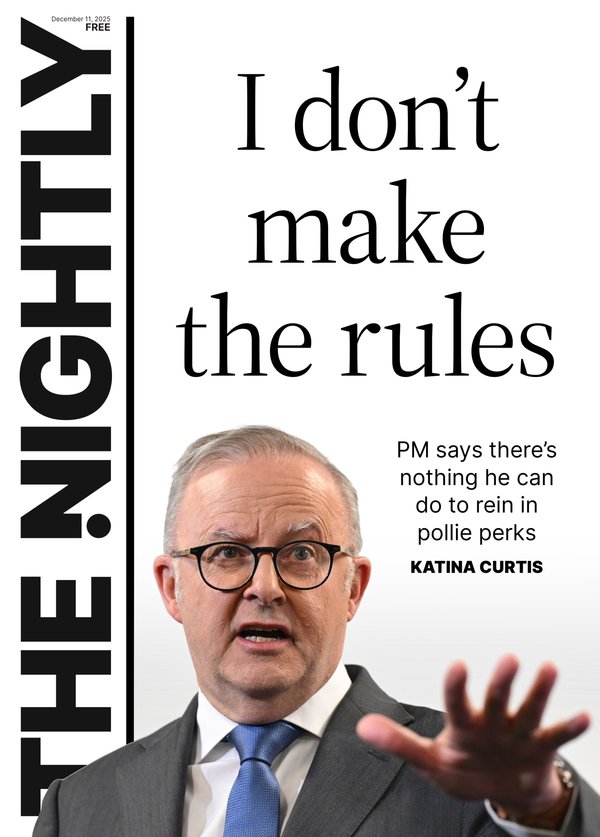THE NEW YORK TIMES: Y2K kids were the last to really rage with no one watching

When I stumbled out of my first concert in the spring of 1998, I couldn’t even hold up my head. My 17-year-old ears were buzzing and a trickle of blood ran down the side of my neck from a hoop earring that had been ripped out in the mosh pit where I had left every last scrap of my adolescent rage.
Just months after the release of their defining album “Around the Fur,” I was infatuated with the California nu metal band Deftones.
As a fan of many nu metal, alt metal and industrial bands that reigned at the time — particularly Korn, Deftones, Nine Inch Nails, Tool and Rage Against the Machine — I’d go on to reclaim that sensation over the next few years.
Sign up to The Nightly's newsletters.
Get the first look at the digital newspaper, curated daily stories and breaking headlines delivered to your inbox.
By continuing you agree to our Terms and Privacy Policy.I felt baptised in the highly emotional music that candidly examined themes of misery, loss and alienation, feelings expressed in urgent vocals, guttural sounds, screams and growls.
It’s easy to forget how popular this sound was. Freaks ruled, and not just figuratively. Korn were bona fide rock stars: “Follow the Leader,” their sophomore album, debuted at No. 1 on the U.S. Billboard 200 in 1998, selling about 270,000 copies in its opening week; “Issues,” in 1999, also debuted at No. 1, selling nearly 575,000 copies in its first week and keeping both Dr. Dre and Celine Dion out of the top spot. As of 2021, the band had sold more than 40 million albums globally.
But I’m not trying to nostalgia farm and wax poetic, I swear. Nor am I here to defend, dissect or take down the toxic dynamics inherent to the nu metal scene.
The lyrics were often obscene and nihilistic, and the energy frequently tipped toward anarchy. As a young woman enmeshed in the dude-heavy environment, you don’t need to tell me.
We can also probably agree that most Y2K pop culture touchstones had a very dark side.
This instead is an ode to a realisation that those of us who came of age in that moment were the last wave of disaffected youth to have something we didn’t even know we had, something we were all about to lose: the ability to express ourselves freely in public without the ever-looming spectre of perpetual surveillance, digital documentation and social-media receipts.
When we raged, we never considered that we were being watched, because we weren’t.
We were there for the moment. We went all out. We were cringe. We were free, even when it was ugly. There were no screens to break, only lit cigarettes to dodge.
These days, loneliness and isolation are epidemics, in no small part because of technology. We regularly mourn our shift away from what’s “real.”
Usually this thinking is applied to the feel-good aspects of the good ol’ days: family dinners, going to movie theatres, simply hanging out in person.
But I can’t help but remember when rage was a collective act, when cavernous internal loneliness wasn’t a reason to disengage from the world physically.
At their best, these shows were a channel for camaraderie through rebellion, a place to exorcise real-world dismay through art and metaphor.
It’s an outlet that prior generations also enjoyed, whether in the hardcore punk and metal scenes of the 1970s and 1980s, or the hip-hop and grunge scenes of the 1990s, before winding down shortly after nu metal’s heyday and the rise of photo-forward social media, particularly Myspace in 2003.
In Korn’s hit “Blind,” off the group’s self-titled debut album in 1994, lead singer Jonathan Davis feverishly repeats: “I can see, I can see I’m going blind.”
The lyric conveys the awareness of an inflection point and of an impending loss; the desperation of straddling two states of being; of having something critical and having little say as it slips away.
Today, we’re steeped in rage, which always finds a release. But like many once-shared experiences, it has often become a private act demonstrated primarily from behind a keyboard, whether in texts between individuals or public comments posted online.
When rage does emerge en masse now, it’s almost always through a political lens. And it comes with the acceptance that your face and identity may be captured, and even used against you.
That stands in great contrast to a time when adolescent rage could be a fitful state of confusion without a clear point of view or a digital shadow.
Nu metal fell out of the mainstream relatively quickly (with Woodstock 99 hastening its collapse), then rock music started disappearing from the charts altogether.
But with Gen Z’s interest in the “before times” swelling, a revival is afoot. It’s evident in fashion trends including oversize JNCO-type jeans, and in the demand for tangible media like vinyl records and CDs. Korn headlined Lollapalooza in August, sharing top billing with Olivia Rodrigo.
Korn filled stadiums on tour with System of a Down this summer. And it was announced this month that these two bands, along with Deftones, will serve as headliners for next year’s Sick New World festival celebrating the music of that era at two huge shows in Las Vegas and Texas.
You don’t need Billie Eilish wearing a Korn shirt onstage to signal a nu metal renaissance, but it doesn’t hurt.
Just see Lola Young’s video for “Conceited” — a Y2K-era vision, complete with electric guitar riffs and a headbanging scene with not an iPhone in sight.
It suggests a sort of dreamscape: Gen Zers surrounded by darkness, eyes closed, present in their bodies in a crowd pulsating with human emotion, no one reaching for their digital escape pod.
Of course, some artists have started banning phones in their crowds in recent years. Often this is for copyright reasons or to stem low-quality recordings from proliferating, but other times it’s to foster what once was.
“I want people to live in the moment, and it’s funny that the easiest way to rebel is to tell people to turn off their phone,” rock star Jack White said in 2018.
“If your phone is that important to you that you can’t live without it for two hours then, I don’t know, maybe it’s time to see a therapist.”
It would indeed take a psychological reboot to restore that type of liberation, even if all security cameras are toggled off and all phones are left at the door. The itch of the digital phantom limb is now hard-wired.
It’s a reality we didn’t outright opt into, but one we can’t easily opt out of.
Videos of System of a Down playing its 2001 hit “Chop Suey!” live in 2002 at the Rock im Park festival in Germany have millions of views on YouTube. When the music drops, the sea of concertgoers erupts in emotion and undulates with movement, fists up, not one gripping a phone.
Videos of the band’s performance in late August at MetLife Stadium in New Jersey reveal tens of thousands of fists up, but now they create a sea of lit rectangles. And the bodies? Standing predictably still so as not to jostle the recordings.
This article originally appeared in The New York Times.
© 2025 The New York Times Company
Originally published on The New York Times
